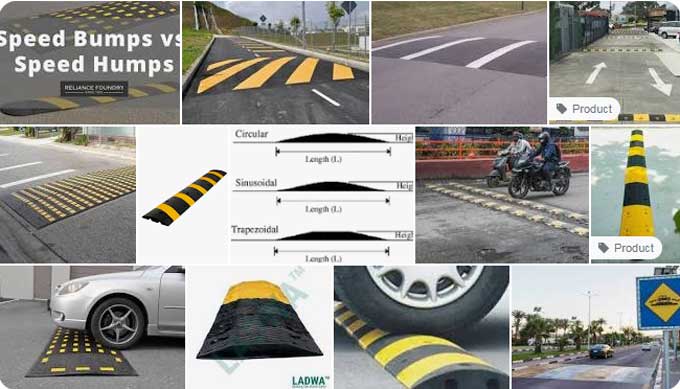
How to Build Road Hump to Save Lives from Accidents

The purpose of a road hump is to physically reduce the speed of vehicles using the roadway. In addition to achieving a specific result on vehicle function, they have been designed to pose an overall safe risk without imposing a narrow or unsuitable risk on vehicles.
Almost all road designs can benefit from road humps, also known as speed humps. There are also several speed humps along the roads to control speeding before and after the humps.
Road Hump Features
A parabolic and vertical structure can construct the speed bumps for operating on low speed, low traffic roads. The ramp length is also maintained between 3 and 6 feet. Road humps typically measure three to four inches in height and twelve to fourteen feet in width. According to the target speed, these sizes are estimated.
Road bumps reduce the traffic volume by eighteen percent, almost resulting in a thirteen percent reduction in accidents. In cities and towns, speed humps are required on roads to restrict vehicle speeds to between 15 and 20 mph.
Road Hump Design
Low speed locations are selected for the placement of road humps. They are commonly used on residential roads, but not on major bus routes, emergency response routes, or significant roads. Bump arrangements are mostly made at the junctions of conjunctions. In addition to circular humps, parabolic or sinusoidal humps can also be designed.
Ideally, the slope should be at least 1:25. Gradients exceeding 1:10 are not recommended. Road hump vertical lips should be no higher than a quarter inch.
Tapers should not have more than a ratio of 1:6 slopes on their sides. Using caution signs to warn approaching drivers of road hump is essential to maintaining road humps.
It is common to paint the humps with pavement markings or highlighters in order to enhance visibility. Suitable drainage is provided by the tapered edges of the speed humps.
Importance of Road Hump
Speed bumps should not be kept on roads in non urban areas. You can keep them on slow speed roads in some urban locations if you need to.
There should be a minimum width of 3.7 meter for the hump. At the peak, it must be 1 decimeter high and have a parabolic shape. At 45 degree slopes, 200 millimeter wide black and white lines should be painted on the humps' faces.
Road Hump Types
Short Hump
The short humps can be defined as those that can be straddled by all types of wheels of regular vehicles. The humps provide a sharp jolt when the vehicle breaks at high speeds. The vehicle body is pushed upwards as the axle travels over the hump at a slower speed.
The response of vehicles to short humps depends on the characteristics of their suspension. At higher speeds, short humps are not painful, but at lower speeds, they are boring. As a result of worries about damage to the vehicles, the rider proceeds at a slower speed.
Long Hump
A long hump is a hump that can be straddled by a certain large type of vehicle. There is less of a ramp effect with these road humps. You have to pass through long humps for a long time. The vehicle's body is deflected by long humps rather than the tires or suspension deflecting quickly.
To learn more, watch the following video tutorial.
Video Source: zwiah
Demerits of Road Humps
Roads become less beautiful as a result. During the movement of trucks, there is an increase in sound pollution. The chances of your vehicle being damaged on a hump road are high. Vehicle travel times can be increased as a result of Road Humps. There are many problems for emergency vehicles.


